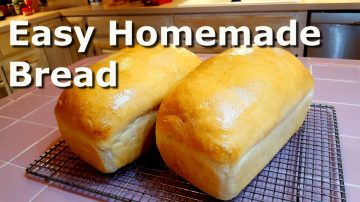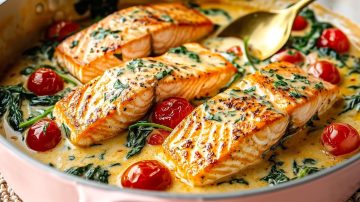Understanding Salt: Types and Uses in Cooking
Video Stats
Recipe Overview
Overview
In this lesson, we delve into the fascinating world of salt, a fundamental ingredient that can dramatically influence the flavor of our dishes. The video begins by highlighting the importance of understanding the different types of salt available, such as table salt, kosher salt, and flaky sea salt. Each type has its unique characteristics that can affect how they should be used in cooking.
One of the key takeaways is the concept of measuring salt by volume versus weight. The video explains how different salts pack differently, which can lead to inconsistencies in seasoning if not measured correctly. For instance, table salt, with its fine grains, can easily pack into a measuring spoon, resulting in more salt than intended. In contrast, kosher salt’s larger crystals provide a different experience when seasoning food.
The lesson also emphasizes the timing of when to add salt during cooking. Adding salt at the beginning allows it to dissolve and penetrate the food, enhancing its natural flavors. Conversely, adding salt at the end can lead to an overly salty exterior without the same depth of flavor. This insight is particularly valuable for those looking to master their seasoning techniques and create perfectly balanced dishes.
Overall, this video serves as a comprehensive guide for both novice and experienced cooks alike, offering practical tips and insights into the often-overlooked nuances of using salt in the kitchen. Whether you’re preparing a simple meal or an elaborate feast, understanding how to use salt effectively can elevate your cooking to new heights.
Recipe Details
Steps & Tips
Discuss the importance of salt in cooking.
Present table salt, Diamond Crystal kosher salt, and flaky sea salt.
Explain the differences in measuring salt by volume versus weight.
Tip: When switching between types of salt in a recipe, remember that it's not a one-for-one measurement.
Tip: Table salt is consistent across brands, making it reliable for recipes.
Tip: Use kosher salt for pinching and seasoning to taste.
Talk about the uses of flake salt, table salt, and kosher salt.
Demonstrate how to season a steak with kosher salt.
Tip: Seasoning from a height allows for even distribution of salt.
Tip: Keep your fingers dry when seasoning to avoid clumping salt.
Demonstrate the technique of seasoning high and dry.
Discuss the texture and use of flake sea salt.
Tip: Flaky sea salt adds texture and should be used as a finishing salt.
Conduct a taste test comparing roasted carrots with salt added at different times.
Tip: Add salt early in the cooking process to allow it to penetrate the food.
Tip: If you forget to add salt at the beginning, only add a quarter of the total amount at the end.
Tip: For lower sodium diets, add salt at the end in smaller amounts to maintain flavor.
Summarize the importance of understanding salt in cooking.
Ingredients
No ingredients available.
Skill Level
Frequently asked questions
Below you will find answers to the most common questions about this recipe.
Got a Recipe Question? Ask Away!
Interesting Tidbits
- •Different types of salt have unique properties that affect their use in cooking.
- •Kosher salt is preferred for its ability to stick to food and enhance flavor.
- •Adding salt early in the cooking process allows it to penetrate the food, resulting in better seasoning.
- •Flaky sea salt is often used as a finishing salt for its texture and visual appeal.










